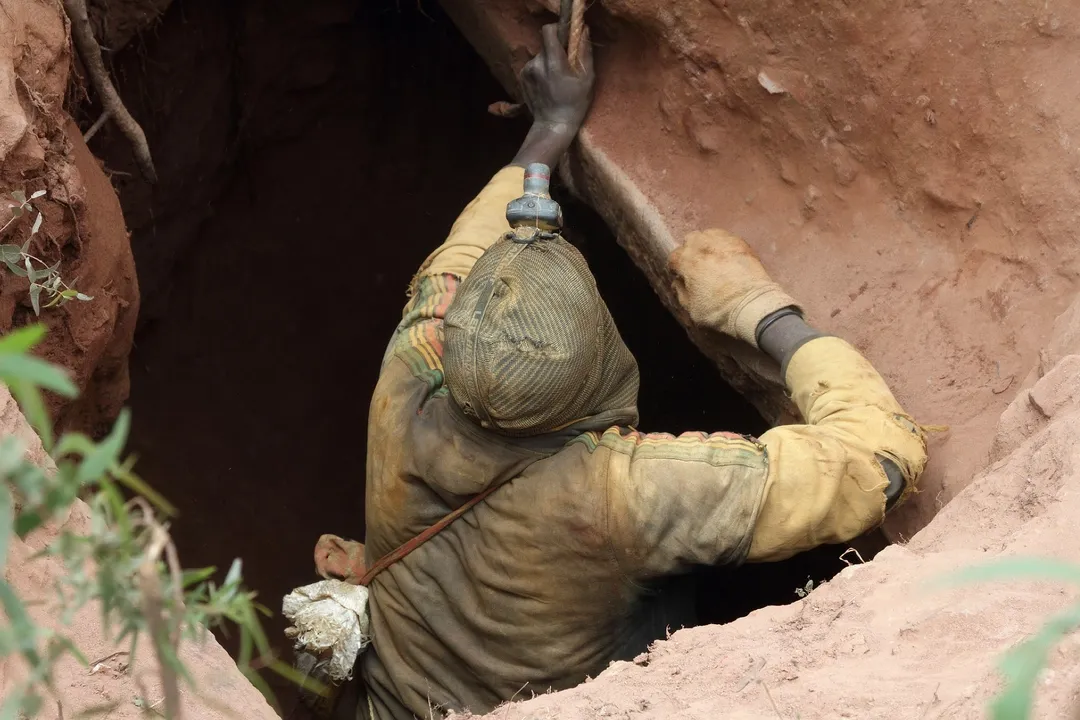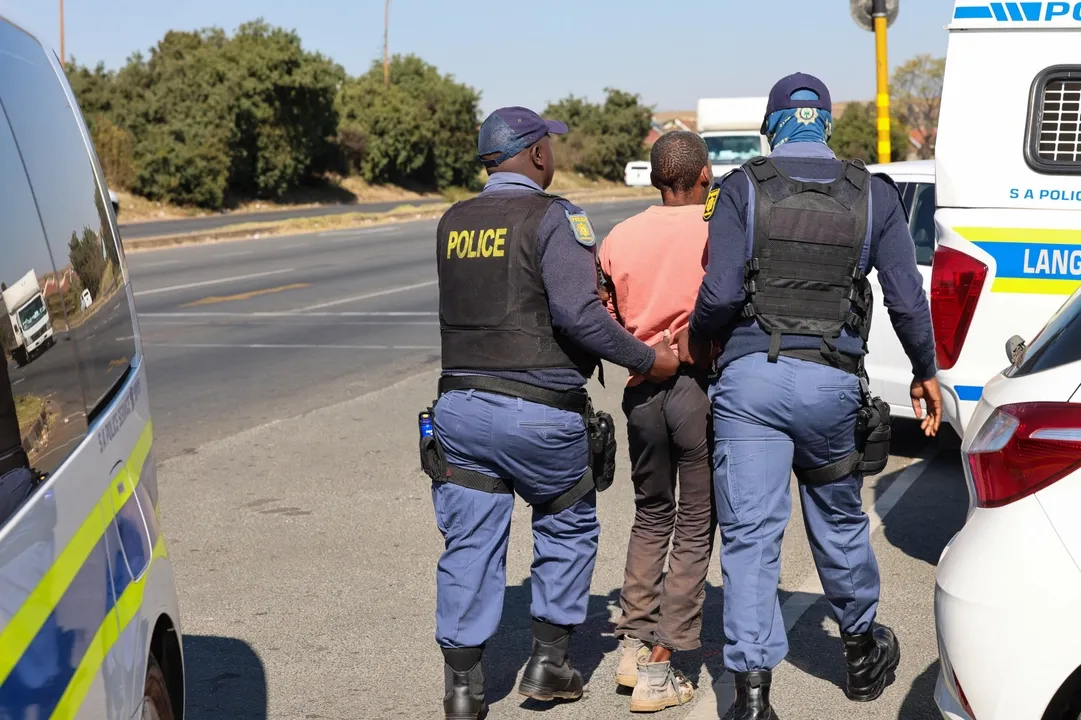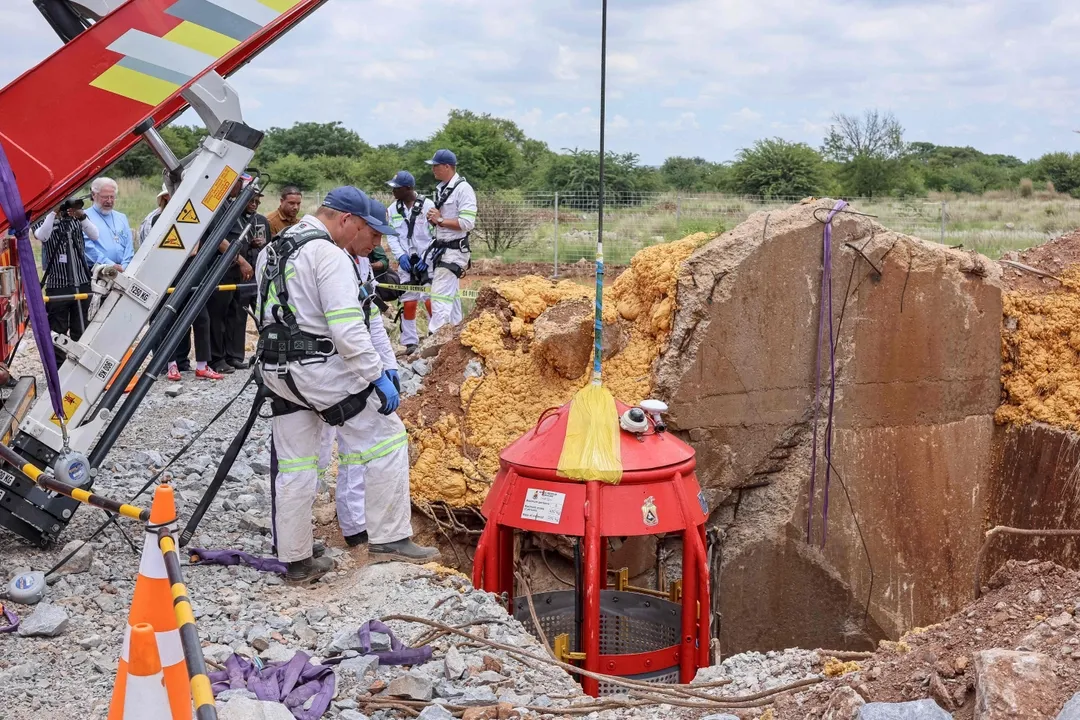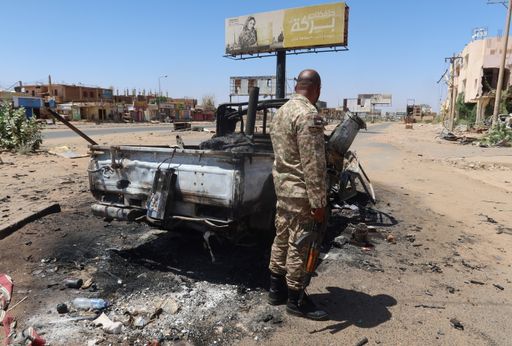Sport
Dollar
42,2134
0.24 %Euro
48,8967
0.3 %Gram Gold
5.430,7100
0.77 %Quarter Gold
9.213,2100
0.59 %Silver
65,6700
0.98 %South Africa has long struggled with widespread illegal mining, primarily fuelled by high rates of poverty and unemployment.
Six months after his living nightmare, Sello still wakes to the memory of decomposing bodies wrapped in bags, their stench filling the abandoned mine shaft where he was trapped underground.
In chilling footage from January 10, emaciated miners can be seen pleading for masks to combat the putrid air while dozens of corpses lie beside them. Over 70 men would die in that South African goldmine, held captive by the gangs who controlled their fate.
Sello was one of the lucky ones who made it out alive from Buffelsfontein Gold Mine in Stilfontein, South Africa.
He used to be one among hundreds of miners, known locally as zama-zamas, trapped deep within the abandoned mine that represents the illegal mining crisis South Africa is now desperate to address with new legislation.
Into the depths
Sello joined the ranks of illegal miners in 2010, lured by the promise of quick money in a country battling widespread poverty and unemployment.
"I had observed illegal miners returning from working in abandoned mines inside South Africa with so much money," he tells TRT Afrika. "They told me that if I joined them, I would make a lot of money too. I was poor and desperate, and I wanted to take care of my family."

The reality underground turned out to be a brutal deception. Instead of a path to prosperity, Sello and others like him found themselves ensnared in forced labour.
They toiled in shallow, cramped shafts where they couldn't even stand upright. The air was thick with stench and the constant hacking coughs of miners battling respiratory infections.
"I wanted to escape, but I couldn't. I was trapped," Sello recounts.
Kantoro, another former illegal miner whose journey started in 2012, has a similar story to tell.
"We struggled for food and materials to work with. There was no electricity, no water, and when we used explosives to break up rocks, because the supports were old, we were constantly at risk of getting crushed," he tells TRT Afrika.
The constant threat of methane gas explosions, exacerbated by gang leaders smoking cigarettes, compounded the danger.
In June 2021, twenty suspected illegal miners died in an underground fire inside an unused mine in Orkney.
Captive workforce
These miners aren't free agents. Heavily armed gangs control every aspect of their existence underground. They confiscate passports, ration meagre food portions, and prevent anyone from leaving, even when conditions deteriorate.

"There were rival gangs constantly fighting for control of the abandoned mine shafts, and my life was constantly in danger," recalls Sello.
The conditions Kantoro and Sello describe became catastrophically evident at the Stilfontein mine in January.
As health conditions worsened underground, reports emerged that the gangs were refusing to let the miners come out. The smuggled video revealed the extent of the horrors.
David van Wyk, a South African mining expert and lead researcher for the Bench Marks Foundation, says many miners are drawn into these operations through deception.
"Widows of miners told our foundation that their husbands thought they were working legally in a mining corporation. They weren't aware that it was an illegal mining operation," David tells TRT Afrika.
The exploited workers would often receive half the wages of legal miners, without benefits like trade union representation, pensions or medical aid, representing what van Wyk calls "a very cheap form and ultra-exploitation of labour".
The South African government acknowledges the escalating danger, with miners risking their lives in unsafe, hazardous conditions and often succumbing to underground fires and collapses.
"They pay the ultimate price...These illegal activities have become fodder for crime syndicates who control mineshafts," the government said in a statement last year.
Legislative response
The government is attempting to turn the page on these tragedies with the introduction of the Mineral Resources Development Amendment Bill.
The bill, expected to pass into law in August, aims to kickstart the process for licensing artisanal and small-scale mining operations. It also seeks to strengthen regulatory measures and enforcement mechanisms against illegal mining, building upon the Mineral and Petroleum Resources Development Act 28 of 2002.

"The bill introduces a licensing regime for artisanal and small-scale mining operations, thereby enhancing economic growth. Furthermore, the amendments seek to strengthen regulatory measures to combat unlawful activities while ensuring clear prohibitions and enforcement mechanisms in relation to illegal mining," says the government in its official statement of intent.
This legislative effort comes after intense criticism of the authorities' handling of the Stilfontein standoff.
Despite the proposed bill and the documented dangers, mining researcher and activist Makhotla Sefuli notes that poverty continues to push many into the clutches of illegal mining syndicates.
"So, they go about in vehicles asking people, 'Do you want a job?' Of course, people want jobs, and they jump on these vehicles and soon find themselves in a mine," he says.
The first quarter of 2025 saw the legal mining industry recording its lowest employment levels, with 35,000 workers laid off, according to Statistics South Africa.
Outdated infrastructure, slow adoption of new technologies, and the global shift away from coal are contributing factors.
With such massive job losses, thousands continue to be drawn into the 6,000-odd abandoned mines spread across the country. The economic toll is staggering, with over US $3.9 billion worth of resources lost annually to illegal gold mining alone.
As for Kantoro and Sello, no amount of persuading would convince them to tread that path again.
"I can only go back underground when I am employed legally. I will never go back to working as an illegal miner because the risks are just too great," says Kantoro.
Sello pleads for a legal pathway. "It is better for the government to open up the shafts and allow us to go and work…Unemployment is not going anywhere. Allowing us to work in these mines legally will help alleviate our suffering," he says.
The scars of desperation and exploitation run deep in the South African mining sector.
Comments
No comments Yet




















Comment